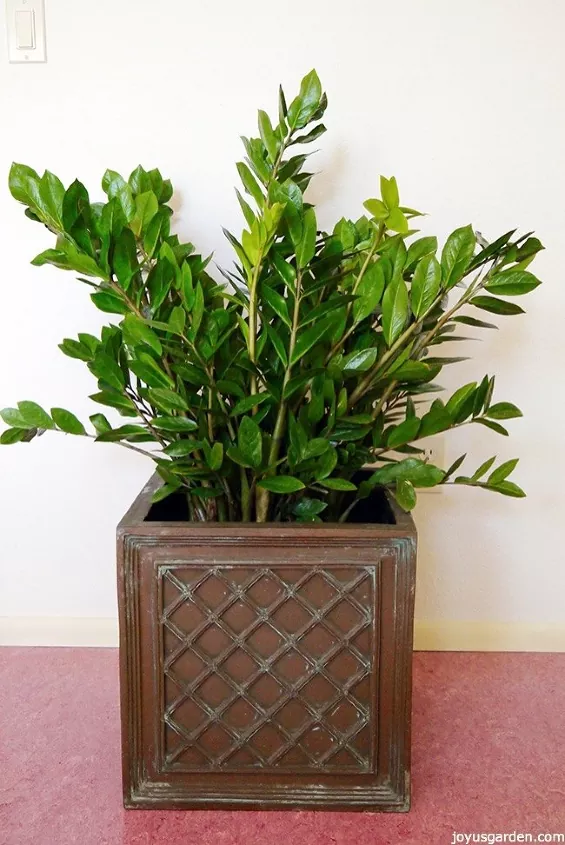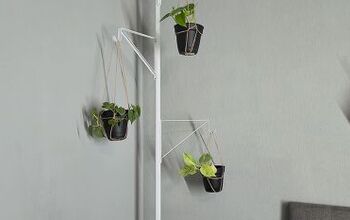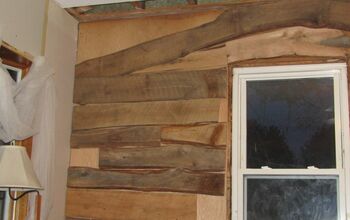How to Repot Plants and Signs It's Time to Do So

Like all living things, plants need a healthy home and plenty of space to grow. Most houseplants will need to be repotted at least once in their lifetime. But if you don’t have the greenest thumb, you may be unsure if or when your plant has outgrown its home or needs new soil at the very least. But we can assure you, it is not as tricky as it sounds to repot a plant.
In this guide, we’ll tell you how to know when it’s time to repot a plant, how to choose the right soil and container, and how to care for repotted plants to help them flourish in their new digs.
Photo via Joy Us garden
How to Tell If Your Plant Needs Repotting
Keep in mind that repotting does not always mean transferring it to a new planter. In some cases, repotting involves changing your plant’s soil and returning it to the same pot (if there is still plenty of room to grow.) Here are some telltale signs that your plant needs repotting.
If your plant is root-bound or pot-bound it needs to be relocated. This means the roots have run out of space and have begun growing out of the bottom of the container. It is easy to tell if your plant is root-bound—you’ll notice roots creeping out of the drainage holes.
If you can easily lift your plant—roots and all—out of the pot, it probably needs a larger pot. And when you lift the plant out of its pot and notice more roots than soil, it’s definitely time for a repotting job. It’s important to repot a root-bound plant because they dry out faster than usual because they’re without sufficient soil to hold water.
If your plant is giving you one or more of these cues, repotting may be the answer.
- The plant is top-heavy, leaning over, and needing support.
- The plant’s growth has slowed considerably (normal winter dormancy aside).
- The leaves are browning, dropping, or falling off.
- Mold is visible on the surface of the soil.
Keep in mind that repotting is stressful for plants. Try not to do it too often—preferably only when your plant needs more nutrition or the additional space of a larger container.
And always rule out more simple fixes like addressing over or underwatering, fertilizing, and light issues before repotting your plant.
Photo via ForRent.com
How to Choose a Container for Repotting
Before you choose a pot, ask yourself why you are changing the container. Is your plant outgrowing its home? Has the soil lost its luster? Or are you just going for a new look? Keep reading for a few factors to consider when choosing a pot.
1. Container Size
If you are repotting purely for aesthetics, choose a pot that is roughly the same size as the existing one.
When transferring a root-bound plant to a larger container, only do so when your plant has visibly outgrown its existing pot and look for a pot whose diameter is approximately two inches large than the original.
For large plants, like a floor plant, choose a pot that is three to four inches bigger in diameter. If you go too big, that extra soil will absorb too much water, causing your roots to remain wet longer, which can turn into root rot and other diseases.
2. Drainage Holes
Many pots have drainage holes that allow the water to drain out onto a saucer or into the sink. But if not, there are two easy solutions to try.
If you have your heart set on a planter that doesn’t come with holes for drainage, try drilling one center hole on the bottom of smaller pots, or two or three holes in a triangle pattern on the bottom of larger pots.
If you can’t drill into your new pot or don’t want to risk damaging it, you can repot your plant in a plastic container with drainage holes—like a recycled nursery pot—that’s slightly smaller than your outer container. This way, you can remove the plant from the plastic inner container during watering and allow it to drain completely before returning it back to the larger, decorative outer pot.
3. Planter Material
Some materials are better than others when it comes to repotting your plants. When you’re looking for a planter, or even designing your own DIY planter, think of your plant’s needs.
Most indoor plants do well in containers that absorb moisture and draw it away from the roots. Those would include unglazed terracotta, ceramic, concrete, and other pots made of porous materials as opposed to metal or plastic pots, which will hold water and risk root rot.
Can I Add Gravel to the Bottom of My Pot?
Photo via Amber Oliver
How to Properly Repot a Plant
Trust us when we say that repotting a plant is easier than it seems. Once you have gathered all of your supplies, the entire process should take around 15-20 minutes from start to finish!
Tools and Materials Needed
- Rubbing alcohol
- Cotton balls or pads
- Garden knife
- Garden gloves
- Fresh potting soil
- Planter
- Pruning shears
- Rubbing alcohol
- Gardening shovel
- Hand trowel
- Wastebasket
- Watering can
1. Sterilize Your Tools
It is important to disinfect your gardening tools any time you may be working with dead, damaged, or diseased plant tissue to prevent the spread of plant pathogens. Wipe down shears and other tools with a cotton pad dipped in isopropyl alcohol and allow tools to dry before using. Sterilize between cuts or when moving from plant to plant.
2. Remove the Plant
While gently holding the stem of your plant, slide it out of the pot. If it is hard to remove, tap on the bottom of the container to loosen the roots or guide it out with the help of a small hand trowel.
3. Clean Up the Roots
Once you have removed the plant from its original pot, it’s time to attend to the roots. Use your gloved hand to gently loosen them. With your sterilized shears, prune any roots that look discolored, soggy, or excessively long.
4. Fill the New Pot With Fresh Potting Soil
Add a layer of fresh potting soil to the new container of your choice. When shopping for potting soil, look for a product that contains a mix of these three basic ingredients: pine bark, peat moss, and either perlite or vermiculite.
Because pine bark takes a while to break down, it extends the life of the soil. Peat moss allows space for roots to grow while retaining moisture.
Perlite and vermiculite are used to create space in potting soil and help keep it light and fluffy so water can properly drain. (You’ll probably recognize perlite as those tiny, white, sponge-like granules scattered throughout most potting soils.)
5. Place Your Plant in the New Pot
Set your plant in the center of the new pot, and use your hands or a small garden shovel to surround it with soil until it’s stable and can stand upright on its own.
Continue adding soil, leaving about an inch of space between the top of the soil and the rim of the container. This space at the top will prevent spills during watering.
6. Water Your Plant
Now, it’s time to water your relocated plant. Water per usual, giving it time to drain into the saucer, or if you’re using a container within a container, let it drain in the sink before transferring it into the larger planter.
Set a Reminder
Photo via Joy Us garden
More Helpful Hints for Repotting Plants
Now that you know why and how to repot a plant, here are some additional tips to help your greenery thrive in its new home.
1. Wait to Repot
Repotting is taxing on a plant, and so is bringing a plant home to a new environment. If you just got home from the nursery with a new plant baby, give it a few days or weeks to adjust to your space before moving it into a different container. The same is true when you move an indoor plant to a different part of your home.
2. Follow Your Plant’s Cues
Once recognize the signs of growth, you’ll know when it’s time to repot your plant. Generally, younger, rapid-growing plants need to be repotted every six months, while older plants can go every few years between rehoming.
3. Wait Until After Winter to Repot
Like many humans and animals, plants tend to slow down and go relatively dormant during the cold winter months. If you can, plan to repot your plants in the spring or summer when they resume active growth and can settle in their new soil comfortably.
4. Don’t Skimp on Potting Soil
You’ve likely heard the saying, “you are what you eat.” Well, the same is true for your violets and ferns. If you are taking the time and care to repot your plants, it makes sense to provide them with high-quality potting soil designed for their needs.
Look for potting soil that contains the key ingredients we mentioned above: pine bark, peat moss, and either perlite or vermiculite. There are potting soils for indoor plants or raised beds, and others specifically formulated for certain plants like succulents, violets, and orchids.
When in doubt, ask an employee at your local garden nursery to point you in the right direction.
5. Don’t Forget to Fertilize
While premium potting soil contains nutrients to help your plant grow and stay healthy, regular watering depletes containers of these nutrients over time.
Plant fertilizing guidelines vary from species to species, but most will benefit from a water-soluble fertilizer at least every two weeks starting in the mid-growing season.
6. Container Design Matters
We’ve covered all of the practical concerns when it comes to repotting plants. But we’d be remiss to overlook your planter’s design. Your container should complement your plant’s shape and structure, and never compete with its color, leaf design, and flowers.
Before committing to a pot, set your plant in a few different containers and step back to see how each looks from afar. While the container is certainly important for your space’s aesthetic, make sure that it doesn’t take away from the real star of the show—your plant!
Repotting your plants doesn’t have to be a dreaded chore. In fact, moving your plants to larger, more suitable, (or just prettier) pots can be fun.
With just a few gardening tools that you probably already have on hand, some nutritious potting soil, and new containers, you can have your plants in their new homes in a single afternoon.
How do you know when your plants have outgrown their pots? Share your tips below!






























Frequently asked questions
Have a question about this project?